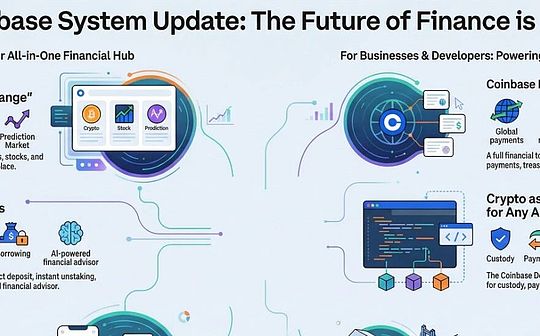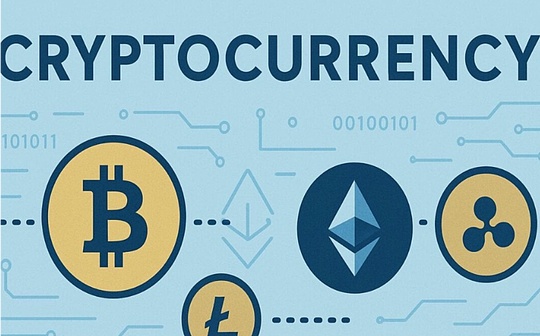
The COBO security team conducted a detailed analysis of the recent attacks on the Indian cryptocurrency exchanges, and shared how COBO helped customers resist online attacks from the aspects of risk control mechanisms and security systems.
1 event outline
On July 18, 2024, an additional wallet of the Indian cryptocurrency exchange was stolen more than $ 230 million.The multi -signed wallet is Safe {Wallet} smart contract wallet.The attacker induced the multiple signatures to sign the contract upgrade transaction. The attacker directly transferred the assets in the wallet through the upgraded contract, and eventually transferred all about $ 230 million in assets.
2 Analysis of the attack process
Note: The following analysis is based on WazirX and Liminal’s post -after -to -post reports, data on the chain, and public information on the Internet. There may be information incomplete or errors, which leads to the deviation of analysis conclusions.The analysis results are for reference only, and the subsequent investigation results of the manufacturers shall prevail.
Original link:
-
WAZIRX blogThehttps://wazirx.com/blog/wazirx-iler-attack-key-nSights-and- Learnings/
-
Liminal Custody blogThehttps://www.liminalcustody.com/blog/update- on-wazirx-incident/
2.1 Sign more wallet configuration and attack process
According to the information disclosed by the two parties, WazirX uses Safe (formerly known as GNOSIS SAFE) for funding management and coordinated through Liminal.The SAFE wallet adopts a 4/6 signature method, of which 5 private keys are managed by hardware wallets by WAZIRX members, and 1 private key is managed by Liminal through HSM.
Under the normal process, Wazirx initiated transaction transfer through the webpage of the Liminal platform. The transfer address is limited by the address of the address maintained by the Liminal platform.The 3 of the five signs of WAZIRX determined that the transaction was correct, and the signature of the hardware wallet was signed.After the Liminal platform collects three signatures, use HSM to add the final signature and make the transaction on the chain.Judging from the attack transaction on the chain, the attack transaction does contain 3 legal signatures, and the fourth signature is the initiator of the transaction (that is, Liminal), which is consistent with the disclosed wallet management structure.
Combined with Liminal and WazirX reports, the process of this malicious signing transaction is as follows:
-
The attacker induces WazirX signature transactions through some unknown means (including unliked 0-DAY network attacks, social engineering attacks, etc.).
-
Three members of WAZIRX logged in to the Liminal platform through bookmarks and other Liminal platforms to conduct Google verification and MFA verification. Check out that the signature transaction is 2 GALA and 1 USDT transfer transaction, and a hardware wallet is signed.However, the content signed by the actual victim is not token transfer transactions, but the contract upgrade transactions of more wallets.Because the actual transaction content is inconsistent with the claimed transfer transaction, the Liminal platform rejected three transactions.
-
At this point, the attacker collected the signature of the three members to the contract upgrade transaction, submitted a malicious contract upgrade transaction to the Liminal platform, and attached three correct signatures.
-
After the signature of the Liminal platform inspected the signature, it initiated a transaction as the fourth signature. After the transaction was on the chain, the wallet contract was upgraded and the control was transferred to the attacker.
-
It can be seen from the attack transaction on the final chain that the Liminal platform signed and on the chain of contract upgrade transactions.The platform’s whitelist -time transfer rotation strategy has not played a due role.
-
It can be seen in the log disclosed by the Liminal platform that the platform has discovered and rejected three suspicious transactions, but did not alert the user or freeze wallet transfer transactions as soon as possible.
-
The content displayed in the hardware wallet is the transaction content to be signed.When signing multiple signing transactions, Wazirx signs trust the transaction displayed on the Liminal page, and does not carefully check whether the signature content of the hardware wallet is consistent with the transaction displayed by the Liminal page.Essence
-
Transaction risk control: Customers can easily create and edit the risk control of transaction on the editor chain and under the chain, and handle the approval action (including automatic approval, automatic rejection, and multi -person approval) from motion to deal with each transaction.
-
Business risk control: Customers can define the approval rules of various platform management operations (such as deleting team members or frozen team accounts).
-
User role and authority: Customers can allocate specific user roles for the designated team members.At present, Cobo Portal provides five preset roles -observer, currency withdrawal staff, approval staff, operator and administrator.Customers can also create other roles according to their business needs.
-
The chain transaction risk control is managed by the back -end system of Cobo Portal.COBO’s risk control engine can check and control to tokens and calls for tokens and contract calls according to the rules of user configuration to ensure that the transaction content meets the user’s restriction requirements.It is worth mentioning that for the MPC wallet, we support the deployment of custom risk control programs (called Callback) on the MPC-TSS signature node.The risk control program is independent of COBO and is deployed on the customer’s own MPC-TSS node.The risk control of this location can provide customers with the last guarantee in the extreme situation of COBO.In the scene in this case, if the Wazirx signature is a MPC-TSS node protected by callback, the attacker cannot collect the signature of non-expected transactions.
-
Trading risk control on the chain is managed through smart contract management on the blockchain networkEssenceWe support the configuration risk control rules on the smart contract wallet through the COBO SAFE framework, including the configuration chain to transfer the white list on the configuration chain. It is difficult for an attacker to damage the white list machine on the chain.In the scene in this case, if you use the COBO SAFE chain to transfer the white list mechanism, the attacker will not be able to launch any transaction outside the list.
-
Full hosting wallet:https://manuals.cobo.com/cn/portal/supported-tokens-custodial
-
MPC wallet:https://manuals.cobo.com/cn/portal/supported-tokens-dc
-
Full Host Wallet: The full hosted wallet adopts advanced encryption technology and risk control engine to ensure that customers’ funds are exempted from unauthorized access and potential attacks.It uses a stable three-layer (thermal-warm-cold) private key storage structure. 95% of the funds are safely stored in cold wallets, and only 5% of funds are stored in hot wallets and warm wallets.
-
MPC wallet: Multi -party calculation (MPC) is an advanced encryption technology for blockchain private key management.Cobo Portal provides two types of MPC wallets: institutional wallets allow institutions to fully control the assets of their own funds or their end users; end users’ wallets so that end users can fully control their digital assets.
-
Smart contract wallet: These wallets support various smart contract wallets, mainly including Safe {Wallet} and other account abstract smart wallets.It also supports flexible entrustment of external accounts (EOA) wallets to seamlessly interact with the smart contract ecosystem.
-
Exchange wallet: Exchange wallet is a one -stop solution that easily manage multiple exchange accounts.It focuses on all exchanges accounts in a single interface for user -friendly, which can be seamlessly viewed, monitored, and manages assets in each exchange.
-
Cobo Guard generates the only public key and private key pair for each user to ensure that your binding applications have powerful security infrastructure.
-
The user’s public key is shared with Cobo, and the private key is safely stored in your iPhone’s native Secure Enclave.This setting ensures that all operation approvals are signed through your private key, and the identity verification is used using the public key you shared with Cobo.
-
The most advanced biometric authentication technology (such as fingerprint scanning, FACE ID, or PIN code) is easily authorized to enhance the integrity of the authentication process.
-
After binding Cobo Guard, each withdrawal and payment transactions need to be confirmed in the Cobo Guard.This additional security layer has significantly increased transaction protection and reduced the risk of unauthorized access.
-
Cobo Guard can display the user -friendly transaction analysis content during the transaction review process, which is convenient for reviewers to judge.
-
Use leading terminal security protection products to monitor and respond to potential threats in real time
-
Use hardware key protection terminal safety
-
The permissions are detailed, and any permissions need to apply
-
Regular internal fishing drills to improve employees’ safety awareness
-
Implement 7 × 24 monitoring and maintenance to ensure the stable operation of the system all -weather
-
Regular full -quantity penetration testing and code audit for business systems
-
Regular internal and external offensive and defensive drills
-
Through the well -known safety manufacturers, a penetration test is performed every six months without found any safety issues
-
COBO infrastructure currently has 200+ security strategies and conducts regular security inspections
-
With the ability to resist DDOS and intercept common security vulnerabilities
-
Get ISO-27001 and SOC 2 Type 2 compliance certification
According to WAZIRX’s description, the signature person uses a hardware wallet to keep the private key.The attacker also collected the signature of three signatures through fake transfer transactions.Therefore, it is inferred that the three WAZIRX managers do not have a private key leak.Similarly, there is no leakage of private keys, otherwise the attacker will not initiate the last transaction through the Liminal platform.
On the other hand, according to WAZIRX’s description, the signature personnel interviewed the correct Liminal platform through bookmarks and conducted Google and MFA verification.The Liminal platform also records the log of three abnormal transactions, so it can also be ruled out that Wazirx logged in to the false Liminal platform fishing page possibility of being collected.In addition, according to the preliminary results of the equipment disclosed by Wazirx, the equipment of the three signatures of WAZIRX was not attacked.
In summary, a possible attack method is that the attacker hijacked the front -end page of the browser’s browser’s browser’s browser through intermediate attacks, XSS attacks or other zero -day attacks to forge the legal transaction content of the victim of Wazirx.After the attacker collected the signature of 3 WAZIRX victims, he submitted a final contract upgrade attack transaction to the Liminal platform through existing sessions, and successfully chain after the Liminal platform wind control.
2.2 Problems exposed by the attack event
According to the aforementioned analysis, both Wazirx and Liminal exposed certain problems in the incident.
Liminal platform wind control is not strict:
WAZIRX did not carefully check the signature content of the hardware wallet:
3 How to help customers resist online attacks
3.1 Perfect risk control mechanism
Cobo provides a variety of risk control mechanisms to solve the security challenges encountered in storage, management and transfer of digital assets.Depending on the type of wallet, the COBO risk control engine allows customers to run independent risk control programs or risk control contracts on the chain.Even if COBO is attacked by security, the risk control inspection of the customer’s side and the chain can still ensure the security of user funds.
Customers can flexibly set up trading risk control, business risk control, and user roles and permissions on demand on demand to set up risk control and permissions for different business types and permissions:
>
3.1.1 Trading risk control
Customers can easily set up and edit the transaction risk control under the editing chain and on the chain.
3.1.2 Business risk control
Customers can set business risk control to define the number of team members required to approve certain operations (such as deleting team members, modifying members’ characters, and frozen team accounts).Depending on the operation, at least 50% of the administrators are required to be approved or approved by only one of them.Customers can also manually edit rules and set up automatic passing, automatic rejection, or approval threshold.
For more information about business risk control, please check the introduction of business risk control:https://cobo- 6.mintlify.app/cn/portal/organization/governance-nTroEssence
3.1.3 User characters and permissions
The user role consists of a predefined set of rules and can be used to allocate specific permissions for designated members in the team.Cobo provides five preset characters, and customers can also create other roles according to specific needs.
For more information about user characters and permissions, please check the introduction of user characters and permissions: Https://cobo-6.mintlify.app/cn/portal/organization/roles-nd-permissions.
3.2 Provide customers with security technical support
COBO provides support for 7 × 24 full -day customer service. If any security problems are encountered, customers can give us feedback as soon as possible, and we will fully assist every customer to investigate hidden safety hazards.
4 COBO security system
For the two possible reasons for this currency stolen incident: online fishing and system vulnerabilities, COBO has comprehensive security measures in the company’s overall network construction, employee terminal, and transaction process to deal with various forms in response to various formsAttack, prevent similar security incidents.
4.1 Safe and diversified wallet technology
Cobo Portal integrates four wallet technology to a single platform to provide the most advanced security architecture, and its chain and token coverage is the widest in the industry (refer to the tokens and chains supported by Cobo Portal support for the full hosted wallet and MPC wallet))Essence
4.2 COBO Guard -multifunctional iOS security application
Cobo Guard is a multifunctional iOS security application developed by Cobo independently, which aims to enhance the security of digital assets.It uses asymmetric encryption technology to protect assets, which can act as a transaction approval tool and MPC private key shard manager.At the same time, Cobo Guard supports multiple authentication (MFA) as a Cobo Accounts, and provides a passwordless login mechanism.
4.3 Fishing for the Internet
Due to the low cost and easy implementation, it can obtain significant benefits such as small costs. Online fishing has now become one of the common methods for attackers.Cobo knows the harm of online fishing. The following measures are taken for this threat:
4.4 For network attacks
COBO has always maintained a high degree of vigilance in network attacks and implemented comprehensive security measures to ensure the efficient toughness of the system and comprehensive protection of potential threats.Based on comprehensive protection measures, we have maintained the perfect record of “zero occurrence” in the “zero occurrence” of security incidents since it was put into operation in 2017, and the security system is indestructible.







